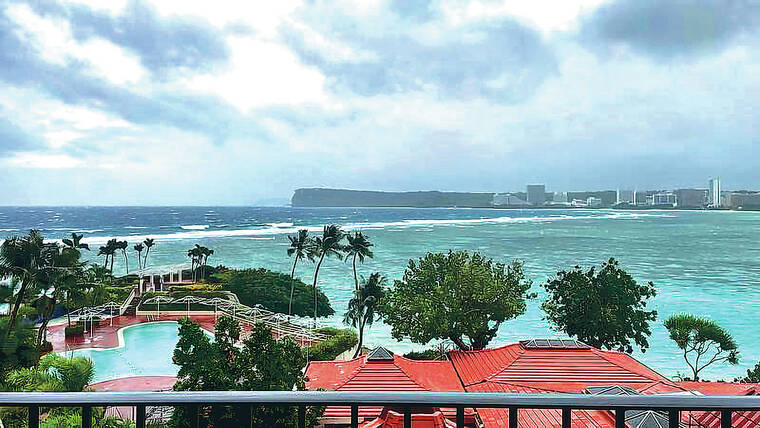Guam ‘very blessed’ with no early reports of major damage in the messy aftermath of Typhoon Mawar
HAGATNA, Guam (AP) — Chainsaws buzzed Friday as neighbors helped neighbors clear toppled trees and began cleaning the wreckage of Typhoon Mawar, which walloped Guam as the strongest typhoon to hit the island in over two decades but appeared to have passed without leaving death or massive destruction in its wake.
While it was still early going in the recovery effort, police Sgt. Paul Tapao said there did not seem to be any major damage, main roads were passable and “Guam has been very blessed to have no storm-related deaths or any serious injuries.”
ADVERTISING
To Tapao, the roar of the mechanical saws was a reminder of the resilience of the storm-prone U.S. Pacific territory and its people.
“Everyone helps out with the cleaning,” he said. “That’s the Guamanian way — that’s embedded in the blood.”
He added that there’s a saying in Chamorro — the indigenous language of the Mariana Islands — “inafa maolek,” that means cooperation, a concept of restoring harmony or order.
“Storms have taught our island to be resilient,” he said. “We’re still here.”
Still, officials said it could take weeks to clean up the mess after Mawar briefly made landfall as a Category 4 storm Wednesday on the northern tip of the U.S. Pacific territory of roughly 150,000 people, flipping cars, tearing off roofs and leaving trees bare.
Some villages had little or no water Friday, Tapao said. About 51,000 customers were without electricity, according to the Federal Emergency Management Agency. And nearly 1,000 people were still in shelters as of Thursday, Guam officials said.
Water contamination from the heavy rains and runoff was a concern: The Guam Waterworks Authority issued a notice advising residents to boil water before drinking it, and the Guam Environmental Protection Agency warned people to stay out of the sea at all beaches because of high bacteria content.
The central and northern parts of the island received more than 2 feet (60 centimeters) of rain as the eyewall passed. The swirling typhoon churned up a storm surge and waves that crashed through coastal reefs and swamped houses.


